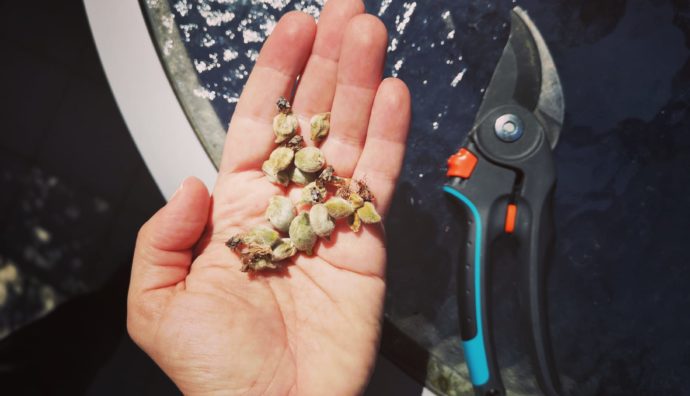When I was a child I was amazed by the manual ability of adults who, behaving with me as we were playing as a game, taught me how to handle a hammer, a screwdriver, a tool.
When my uncle showed me how to graft a plant, it seemed to me that I was peeking a little inside the blackbox of creation. An almond tree that turned into a peach tree, an American vine grafted to an European vine and thus enabled to give grapes and wine… Deep earthly actions, gestures that literally make the hands dirty but that penetrate up to the borders of the code of how the nature in which we are immersed works.
So, when a few years ago we bought a peach tree with Sara to put it on the terrace, for me it was a spontaneous act to remain connected as much with that child who watched expert hands perform wonders, as to understand its meaning.
In taking care of it, the peach tree reveals itself as a great teacher for life. And it has a lot to teach because its humble tree existence has a lot in common with everyone’s experience.
The grafting. There is in each of us a trace of experiences, meetings, choices, actions decided or suffered. We are the result of a combination of events that have literally merged with our innermost nature. Where the graft has taken root, the being has changed. It is useful to rethink those junctions, those encounters that our memory shows to us and ask ourselves how we were and how we became thanks to those events. The almond tree transformed into a peach tree still has the mark, the scar of this transformation. First lesson: change leaves its mark. Always.
The fruits. What was previously impossible, with grafting becomes possible. An almond tree produces almonds. With grafting, an almond tree produces peaches. Second lesson: the impossible becomes possible if we face change.
Pruning. Peach blossom is one of the most beautiful symbols of spring. The many flowers respond to the plant’s need to increase the probability of bearing fruit. But the careful farmer knows that in order to increase the quality and size of the fruit, it is necessary to prune out the little fruits. Where many, too many, fruits are formed after pollination they must be pruned. Otherwise the energy of the plant is not enough to achieve satisfactory fruits and, worse, the vitality of the plant is affected, planning a lesser blossoming in the following season. Third lesson: change requires discernment and choice of the direction that bears the greatest fruit. Exploiting is not equal to divesting.
Fruits without flavor. What is the use of biting a juicy peach if it is tasteless and not sweet? When the plant is old and little care is taken of the soil on which it roots, it is quite common to have a production of tasteless fruits. Fourth lesson: the plant needs nourishing and well-guarded soil to produce good fruit. What we label as stinking manure is not always a waste without use.
Pests, diseases and bad weather. A plant may have been grafted with care and skill. It may produce abundant and sweet fruits. It may grow on well-kept soil. But this does not protect it from the attack of diseases and pests. When a peach arrives on our table we often ignore that the plant from which it comes has received at least five treatments over the year and one treatment every two weeks from the vegetative phase to production. We tried to let the nature do its job, with the result that sometimes not even a peach has been harvested.
And even if everything is done with all the attentions needed, maybe a few days before the harvest a hailstorm comes and all the effort sees no finalization. Fifth lesson: change requires patience, requires acceptance of failure, requires care in removing everything that is external to it and that parasitizes our lives.
The practice of a discipline, believing a faith, the adherence to a system of values, the choice of a relationship, the job-related activities: how many grafts, how many signs of potential change in our lives!
The lesson of the peach tree can help us to live better, with more fullness, the dimension of change.

